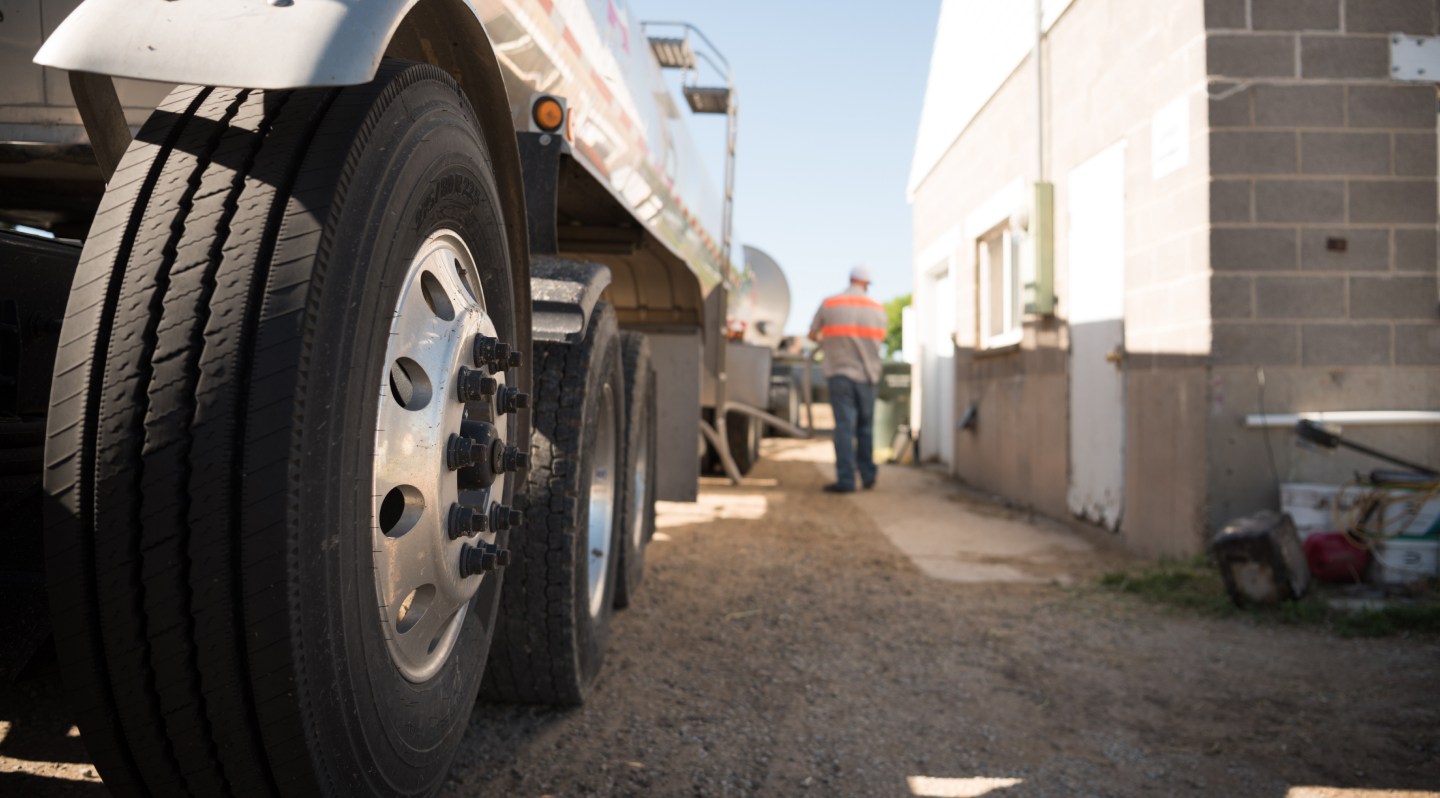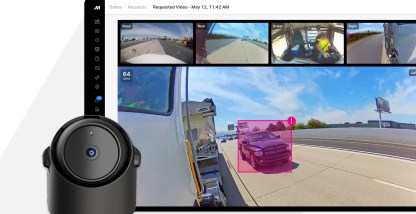Today we know that road surface, tire inflation, and rolling resistance are important in vehicle fuel economy. This awareness has prompted the manufacture of low rolling resistance tires. This article discusses how low resistance tires work, the pros and cons, and other considerations for fleets looking to maintain these tires.
What are low rolling resistance tires?
The rolling resistance of the wheel impacts a vehicle’s fuel consumption. Reducing rolling resistance cuts down on mechanical energy demand to reduce the amount of fuel sent to the engine.
Low rolling resistance tires are designed to decrease the rolling effort of the vehicle. A National Transportation Board report found that “the effect on total fuel consumption will depend on a number of factors, including the efficiency of the engine and driveline as well as the amount of energy used to power accessories.” However, “for most passenger vehicles, a 10 percent reduction in average rolling resistance over a period of time will lead to a 1 to 2 percent reduction in fuel consumption during that time.”
Best low rolling resistance tires for commercial vehicles
The list of low rolling resistance commercial truck tires available is growing. The North American Council for Freight Efficiency noted in its 2020 Low Rolling Tire Confidence Report that the EPA SmartWay-verified tire list had inflated from eight offerings in 2010 to more than 300 as of 2020.
With so many options available, finding the best tire for your needs can be challenging. Make your buying decision easier by reading these industry reviews:
- TireDeets makes recommendations in a top 10 roundup.
- Tire Reviews and More offers a 10 Most Fuel Efficient Tires of 2022.
- TireRack lets you search best low rolling resistance tires and offers reviews, tech articles, and videos.
- Tire Dealer Sites ranks the top eight low resistance tires.
Can you get low rolling resistance truck tires?
Yes, you can get low rolling resistance truck tires for trucks. Low rolling resistance truck tires make it easier for fleets to go green by reducing fuel consumption needs.
Can you get low rolling resistance snow tires?
You can also find low rolling resistance snow tires, which are a more recent development. However, some manufacturers now offer low rolling resistance winter tires that provide better traction on snow and ice while still offering improved fuel efficiency.
What is the benefit of low rolling resistance tires?
There are multiple ways that low resistance tires can save you money.
Improved fuel efficiency
You can measure low rolling resistance tires fuel savings using a rolling resistance calculator. These are offered by many of the top tire manufacturers, such as Goodyear Tire and Rubber, Michelin, and Yokohama Tire. Fleets can plug in details about current tires versus potential replacements, the number of trucks, and current fuel costs to determine savings per truck and more.
In optimal conditions Fleet Owner reports, “These tires can reduce a vehicle’s fuel consumption by 6.28%.”
Better traction
Low rolling tires help reduce road resistance, which means the engine expends less effort. At the same time, these tires are manufactured to improve traction.
Cost savings
Tires are a big expense for fleets. If you’re asking, “Do low resistance tires save money?” the answer is yes. They have improved traction, and are made with higher quality material. While normal tires are manufactured with natural and synthetic rubbers, low resistance tires use traditional materials compounded with a mixture of silica, so the engine doesn’t have to work as hard. That can lead to cost savings in terms of vehicle maintenance and the longevity of your investment in buying a truck.
Sustainability
Every bit of energy the commercial fleet saves, and fuel savings cut, translates to lowered carbon emissions too. That means choosing low rolling resistance tires also benefits your green logistics goals.
What are the cons of low rolling resistance tires?
Buying low rolling resistance tires isn’t a standalone fuel economy solution. The tires are only going to get the best fuel efficiency with preventative maintenance. After all, ignoring tire health can lead not only to lowered fuel economy but also tire failures, which result in costly downtime.
Shorter tread life
Edmunds notes it’s difficult to make categoric statements about the lifespan of one tire versus another. In Edmunds’ review of low rolling resistance tires, it states, “Low-rolling-resistance tires can have less tread life than comparable conventional tires (although some high-performance tires also have terribly short lives).”
Full inflation required
As with any vehicle, it’s important to regularly check the inflation of low rolling resistance tires for trucks. Drivers should at least do a visual pre- and post-trip check to ensure the truck tire is properly inflated.
Checking truck tire inflation pressure and alignment also has value. Tire tread depth is another maintenance factor to regularly monitor.
Try these four best ways to maintain your tires.
How to use Motive to improve your fuel efficiency
Low rolling resistance tires can support greater fuel efficiency. But they’re not the only answer. “A fleet must take a holistic approach,” says Helmut Keller, Continental’s Head of Brand and Product Management for Commercial Vehicle Tires in the Americas region. “Driver behavior, routing, proper tire pressure management, and other factors also heavily influence a vehicle’s fuel economy.”
Here’s how Motive’s fleet management software can help:
- Increase fuel efficiency with improved visibility into fuel consumption.
- Use dash cam technology to help coach drivers avoid behaviors that negatively impact roll resistance (e.g., speeding, hard braking).
- Improve routing with GPS tracking software and keep track of all your assets.
- Ensure proper tire management with maintenance tools, so fleet managers stay updated on retreading and tire replacement needs.
- Easily report on tire monitoring with the Motive Driver App.
View our customer success stories or request a demo today.










